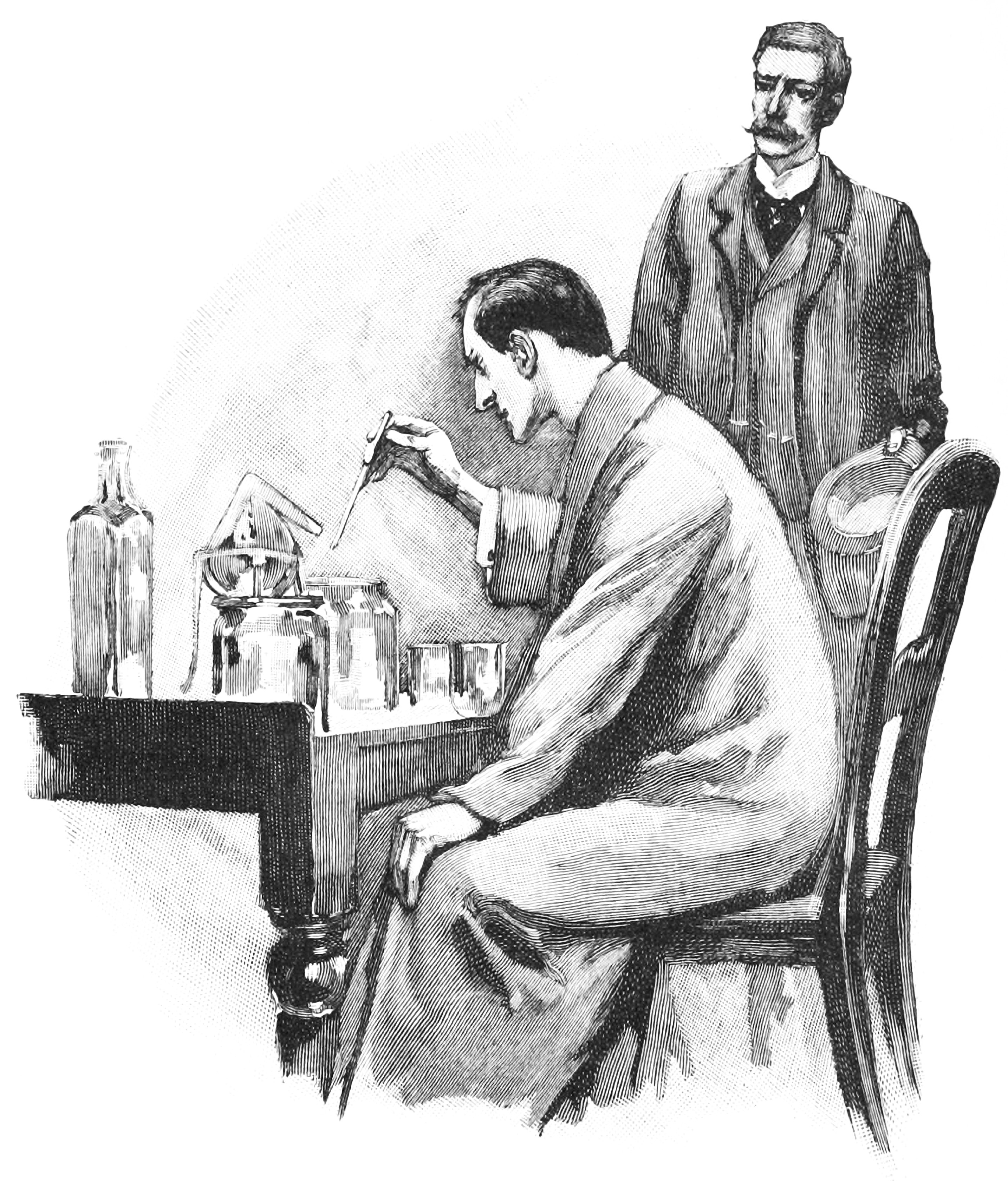

One particular influence was Dr Joseph Bell–a distinguished doctor who worked at Edinburgh Royal Infirmary. In developing the character of Sherlock Holmes, Conan Doyle drew heavily on his medical experience.

2 Indeed, he is first encountered by Watson in a London hospital laboratory, devising a test for haemoglobin. Although he apparently holds no medical qualifications, references in A Study in Scarlet show that he has a healthy interest in such matters. The great detective himself is the central character in the stories. The first of the 56 short stories involving Holmes was published in The Strand magazine of July 1891. Patients were, however, few and far between and this left him with plenty of time to write. He returned to England shortly afterwards and opened an office in London. 2, 3 His practice flourished, but in 1890 he felt in need of a change of direction and studied in Vienna to become an oculist. It was during this period that he wrote the first two Sherlock Holmes adventures: A Study in Scarlet and The Sign of Four. Returning to England, he served as an assistant to a medical school colleague (George Budd), but this proved to be unsatisfactory and Conan Doyle opened his own practice in Southsea in 1882. He worked as a ship's doctor for a time, visiting first the Arctic and then the west coast of Africa. After schooling, he entered medical school at the University of Edinburgh, from which he graduated in 1881 at the age of 22. In the process, the author himself is often overlooked.Ĭonan Doyle was born in 1859. Such is the popularity of his creation that in the minds of many, Holmes has achieved the status of an historical rather than a fictional character. Much can be gained in a discussion of these works by a consideration of the life of the author, Sir Arthur Conan Doyle.

Important personalities SIR ARTHUR CONAN DOYLE The most appropriate starting point is a consideration of important personalities associated with the stories, both fictional and non-fictional. This paper aims to explore the issues raised above in some detail, to consider various other interesting medical references in the canon and finally to consider the relationship between Holmesian deduction and modern medicine. Many of the real patients have their fictional counterparts in the Holmes adventures.” 1 Also on record are 42 of his real patients with the nature of the illness available for 31 of them. Conan Doyle often patterned characters in his writings after medical school professors and friends. “Included within the 60 Holmes adventures are references to 68 diseases, 32 medical terms, 38 doctors, 22 drugs, 12 medical specialties, 6 hospitals and even 3 medical journals and 2 medical schools. The extent of the medical dimension has been crudely quantified by Key and Rodin thus: Moreover, the stories owe a great deal in their construction and execution to medicine–a prime example being constituted by the person and actions of one of the main protagonists, Dr John Watson. Although primarily famous as stories of detection of crime, there is a considerable amount to interest the medical reader–not least the parallels between the Holmesian methods of logical reasoning and deduction and the diagnostic process employed by doctors. The adventures of Sherlock Holmes, as written by Sir Arthur Conan Doyle between the years of 18, are well known and well respected the world over.


 0 kommentar(er)
0 kommentar(er)
